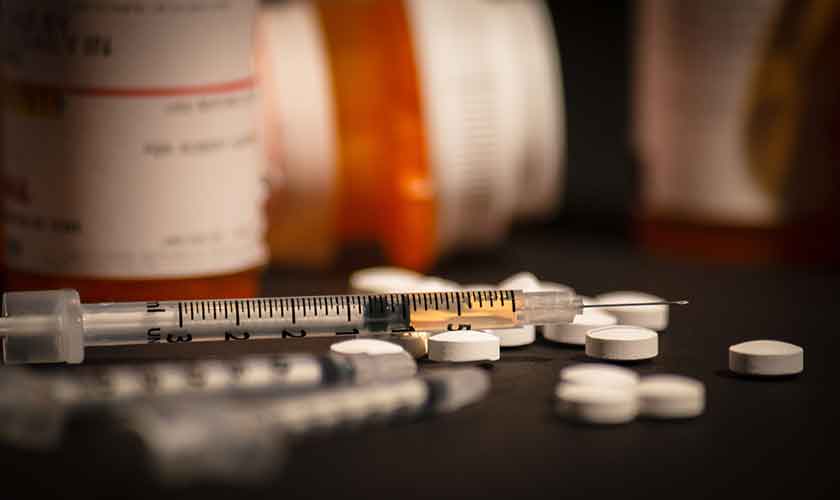here is an international crisis of drug overdose. Nearly 200 million people worldwide use illicit drugs such as cocaine, cannabis, hallucinogens, opiates and sedative hypnotics. During the last twenty years, deaths caused by drug overdose have increased significantly in many parts of the world. Each year, substance use is indirectly and directly responsible for 11.8 million deaths worldwide. In 2020, an estimated 284 million people – one in 18 people aged 15-64 – had used a drug.
June 26 marks the International Day against Drug Abuse and Illicit Trafficking. The UN Office on Drugs and Crime (UNODC) initiated this commemoration to strengthen action and cooperation for achieving the goal of a world free of drug abuse. The objective of this year’s campaign is to raise awareness about the importance of treating people who use drugs with respect and empathy and to combat stigma and discrimination against people who use drugs by promoting language and attitudes that are respectful and non-judgmental. The theme of this year’s drive is: People First: Stop Stigma and Discrimination, Strengthen Prevention.
The World Drug Report 2022 is aimed not only at promoting greater international cooperation to counter the impact of the world drug problem on health, governance and security but also at assisting member states in anticipating and addressing threats from drug markets and mitigating their consequences. The report estimates that 11.2 million people worldwide use injectable drugs. Around half of this number is living with hepatitis C, 1.4 million with HIV; 1.2 million have both.
The environmental impacts of this tragedy include substantial deforestation associated with illicit coca cultivation. Waste generated during synthetic drug manufacture can be 5-30 times the volume of the end product. The dumping of the waste can affect soil, water and air directly and organisms, animals and the food chain indirectly.
Female drug users have been a minority. However, women tend to increase their rate of drug consumption and progress to drug use disorders more rapidly than men. Women now represent an estimated 45-49 percent of users of amphetamines and non-medical users of pharmaceutical stimulants and tranquillisers. The treatment gap remains large for women globally, although women represent almost one in two amphetamines users.
Young people continue to use more drugs than adults and have higher use levels than the past generations. Moreover, a large number of persons in prison settings need drug treatment services, as well as HIV prevention, treatment and care.
Periods of lockdown during the Covid-19 pandemic drove increases in the use of cannabis, in terms of both amounts used and frequency of use, in 2020. Some 40 percent of countries reported cannabis as the drug associated with the greatest number of drug use complaints. Tens of millions of people suffer from drug-use disorders. Drug users suffer first from the harmful effects of the drugs and next by the stigma and discrimination they face.
The objective of this year’s campaign is to raise awareness about the importance of treating people who use drugs with respect and empathy and to combat stigma and discrimination against people who use drugs by promoting language and attitudes that are respectful and non-judgmental. The theme of this year’s drive is: People First: Stop Stigma and Discrimination, Strengthen Prevention.”
Afghanistan used to produce more than 80 percent of the world’s opium. Heroin made from Afghan opium makes up 95 percent of the market. After the Taliban took over power in Afghanistan in August 2021, their leaders issued a ruling to ban the cultivation of all drugs, including the opium poppy, across the country. It has been alleged, however, that the Taliban administration turns a blind eye to cultivation of the opium crop.
Pakistan is facing a serious and complex drug situation. There is illicit cultivation of opium, production of heroin, trafficking in narcotics and increasing abuse of drugs. Over three million persons are estimated to be abusing some type of illicit drug; half are addicted to heroin. The government of Pakistan has mounted a strategy to counter the drug problem; however, its effectiveness is hampered by the difficulty of controlling mountainous and uninhabited borders and the limited human and economic resources available for law enforcement and prevention.
The measures undertaken include crop substitution and the provision of a developmental infrastructure in the poppy-growing areas, the control of the illicit conversion of opium into heroin, the destruction of heroin laboratories, narcotics control through law enforcement, anti-smuggling measures, demand reduction, treatment programmes for drug addicts, and other administrative and legislative control steps.
Pakistan has closely engaged in the Paris Pact Initiative and UNODC’s Regional Programme for Afghanistan and Neighbouring Countries. Under the Triangular Initiative (TI), the country is cooperating with Iran and Afghanistan to fight this threat. In addition to international and regional cooperation, a number of counter-narcotics measures have been taken at the national level, including the adoption of a National Anti-Narcotics Policy in 2019 and the creation of an Inter-Agency Task Force on Counter-Narcotics.
According to a United Nations report in November 2022, the total number of drug addicts in Pakistan is 7.6 million. Of these, 78 percent are male and 22 percent female. The decline in the number of drug users in Pakistan has been attributed to combined efforts by law enforcement agencies. There has been a two percent decline in narcotic drug users since 2013.
The Control of Narcotic Substances (Amendment) Act, 2022, in the country allows detention which may extend to life imprisonment. A fine of not less than Rs 1 million for offences involving heroin and morphine weighing 4 kg or more has also been imposed.
UNODC Executive Director Ghada Waly says in his message: “We need to devote the necessary resources and attention to address every aspect of the world drug problem, including the provision of evidence-based care to all who need it. We need to improve the knowledge base on how illicit drugs relate to other urgent challenges, such as conflicts, ill-health and environmental degradation.”
The writer is a playwright and freelance journalist. He can be reached at [email protected] and his blogging site: soulandland.com
https://www.thenews.com.pk/tns/detail/1085559-combating-drug-trafficking

